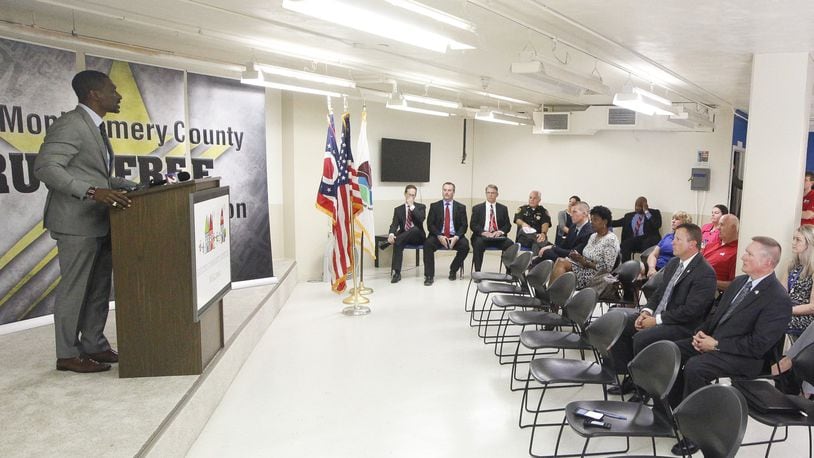The “360 Degree Strategy” cracks down on dealers, but also helps curb the overprescribing of pain pills and places a greater emphasis on prevention efforts through community outreach.
RELATED: DEA used GPS tracker to arrest local suspected drug trafficker
“If drug enforcement is taking a prevention approach, which is not their historical role, how can we as community members … take a different approach?” said Emily Surico, program manager, at East End Community Services. “DEA 360 is bringing not only a local presence of support and awareness, it’s bringing federal resources, putting a federal light on the issue, which is huge.”
The DEA launched the program locally Thursday at the Boys and Girls Club of Dayton along with other federal, Dayton and Montgomery County authorities, as well as local treatment providers and community groups. The DEA already implemented the initiative in a handful of cities, including Louisville, Ky, Pittsburgh, Pa., Milwaukee, Wis. And St. Louis, Mo.
While the problem is unprecedented on a national scale, there was reason the DEA picked Dayton as a 2017 pilot city, said Timothy J. Plancon, special agent in charge of the DEA’s Detroit Field Division.
“Few communities have experienced and suffered from this epidemic as dramatically as Dayton, Montgomery County and the Miami Valley area,” he said. “Chances are most people here have been directly impacted.”
RELATED: 5 key events that spurred Ohio’s opioid epidemic
Bruce Langos, chairman of the Montgomery County Drug Free Coalition, said the additional resources will educate some and help others get treatment.
“The community outreach piece is really important, he said. “We can engage with awareness about the magnitude of the problem. But more importantly, help is available. We still hear that is the No. 1 issue when we’re out on our calls. People aren’t aware of all the services that are available.”
A concert featuring American Idol contestant Alexis Gomez is scheduled for Oct. 16 at the Nutter Center. The event will serve to educate the community about the opioid crisis and will include guest speakers.
Officials provided few other details Thursday on how the money would be distributed.
Rich Isaacson, a DEA special agent and spokesman, acknowledged $500,000 may not stretch far fighting a battle that’s been uphill since 2012.
“Maybe this influx of money and PR may run out in a year, but those relationships and partnerships are going to be strengthened and hopefully build on those looking forward,” he said.
Overdoses began increasing in 2012 and have “done nothing but escalate since,” said Dayton Police Chief Richard Biehl. Overdose calls in the city through July of this year have more than doubled during the same period last year. During 2016, overdose calls numbered 1,371 in Dayton.
RELATED: Overdose crisis: Montgomery County the national example for filmmakers and media
By the end of June, the coroner reported overdose deaths countywide had exceeded the 349 from last year and now number 437.
“There’s a human face behind every one of those numbers,” Surico said.
DEA “360 Degree Strategy” goals:
—Stop cycle of heroin and opioid pill abuse by eliminating drug trafficking organizations.
—Create partnerships with the medical community to raise awareness of dangers of prescription opioid misuse and the link to heroin.
—Help strengthen community organizations to put them in the best position to provide long-term help and support for building a drug-free community
Local partners
—The program aims to bring together area leaders from law enforcement, prevention, treatment, the judicial system, education, business, government, social services and civic and faith organizations.
Source: Drug Enforcement Administration
About the Author
